- RTC Top
- What is RTC Modules?
- Epson's RTC Modules
- Features
- Scenes
- RTC Modules for Automotive
- Development Tools
- Videos
RX4901CE (RTC Module)
High stability, Low current consumption, Time stamp function
The RX4901CE is a RTC module with an integrated 32.768 kHz digital temperature compensated crystal oscillator (DTCXO). It includes various functions such as a time stamp function that can record up to 32 dates and times when an external or internal event occurs, as well as the basic RTC functions such as time and calendar, time alarm, wakeup timer, and time update interrupts. With the combination of an auto power switching function, which includes a control circuit to prevent reverse current to the main power supply, a continuous temperature-corrected 32.768 kHz clock generation, and Seiko Epson's original low current consumption technology, the RX4901CE realizes long battery life on various systems.
Solutions for Lowering System Power and Improving Time Accuracy
Overview
- Built in frequency adjusted
32.768 kHz crystal unit - Interface Type
SPI-Bus interface 3 wire, 4 wire - Low backup current
240 nA Typ. / 3 V - Auto power switching function
Automatically switches to backup power supply by
monitoring the VDD voltage - Time stamp function
32 times max. stamped from year to 1/1024 seconds. - Time update interruption
Hourly, minutely, and secondly - Alarm interruption in Day, date,
hour, minute, second - Auto repeat wakeup timer interruption
- Self-monitoring interruption
Crystal oscillation stop.
VBAT low, VDD low. - Links to convenient toolsClick here
- Links to Video contentsClick here
![]()
![]()
![]()
RX4901CE
Design Support Data Download
Block diagram
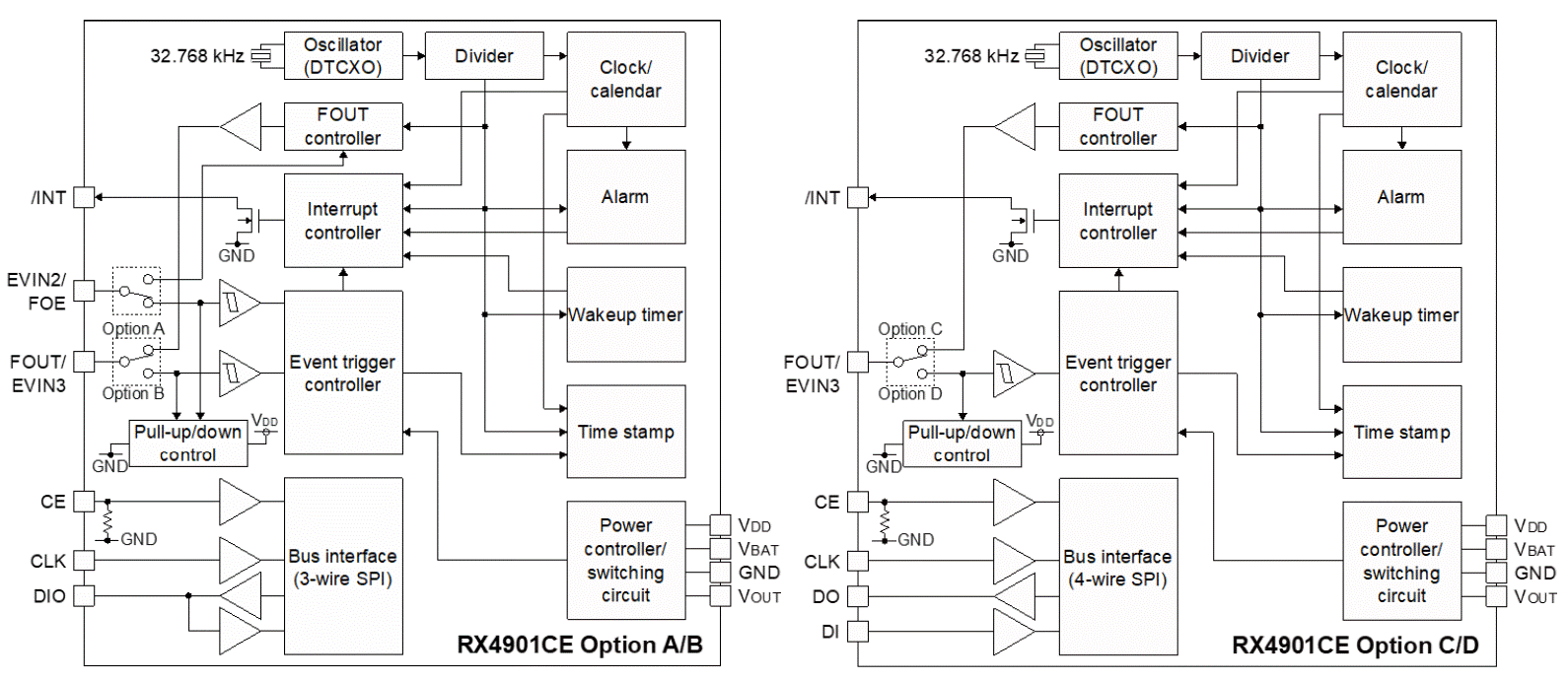
Specifications (characteristics)
Refer to application manual for details

Product name and number
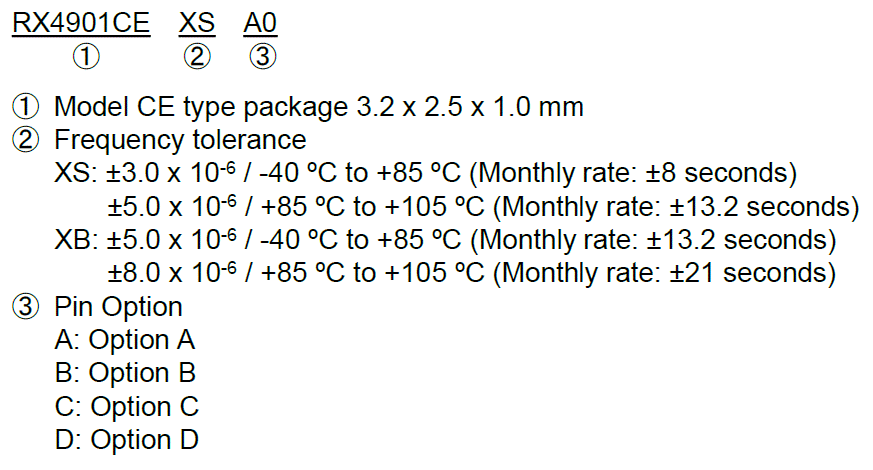
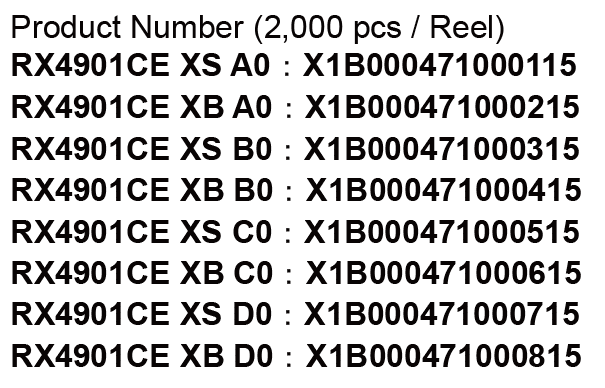
Pin function
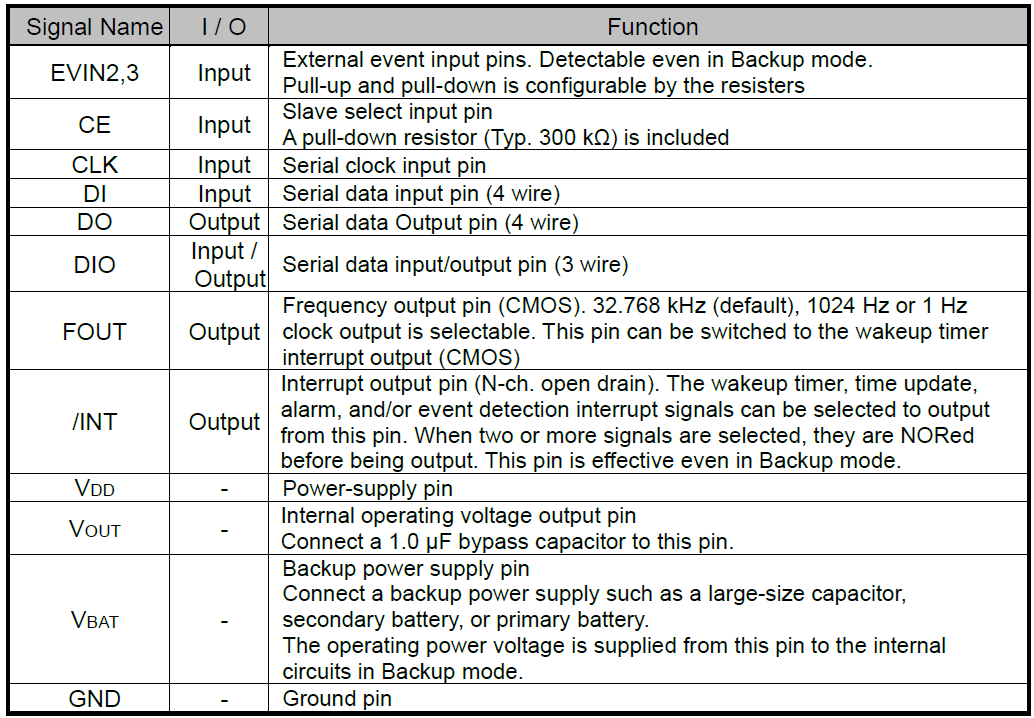
External dimensions / Terminal connection
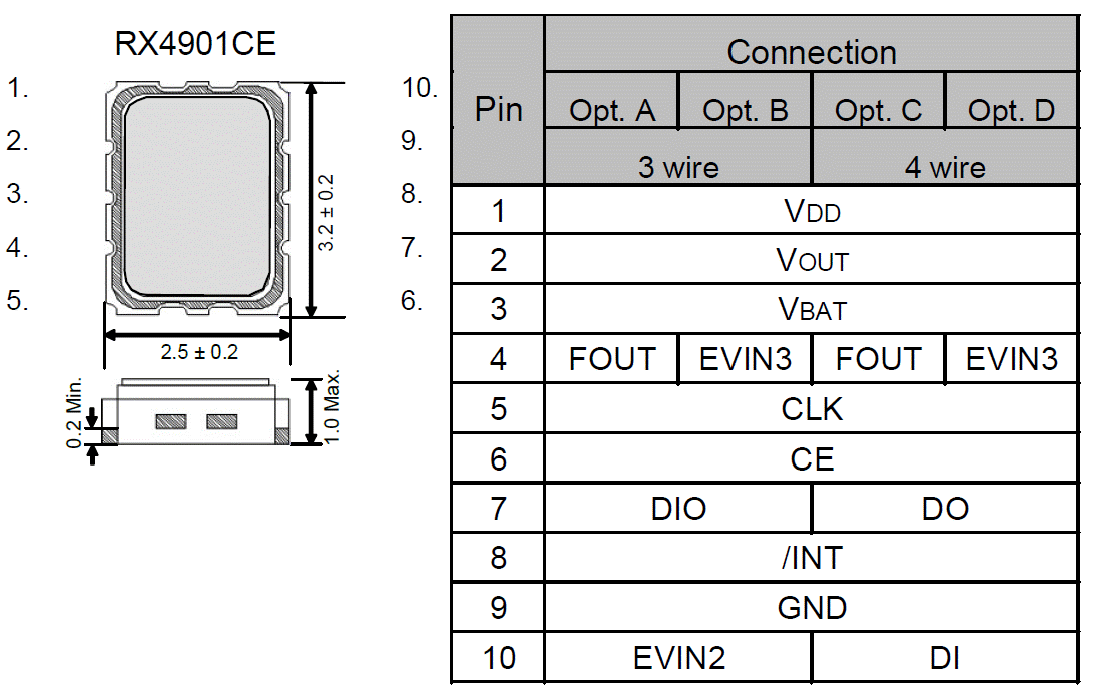
(Unit: mm)
Footprint (Recommended)
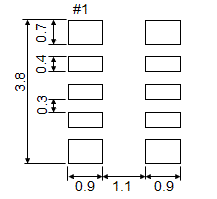
(Unit: mm)
To maintain stable operation, provide a 0.1uF by-pass capacitor
at a location as near as possible to the power source terminal of the crystal product (between Vcc - GND)
Links
Video contents: Feature of RX8901CE / RX4901CE
White paper: Tamper Detection using a RTC Module
White paper: kHz-band DTCXO timekeeping accuracy in a temperature changing environment
